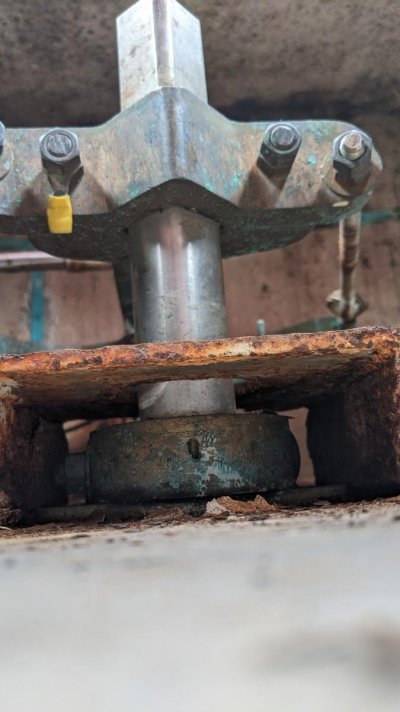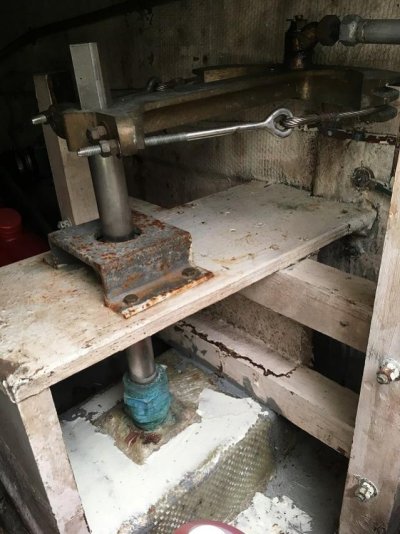SimonBryan
Veteran Member
Hi all
The attached image is of the bracket at the top of the rudder in the lazarette. Obvioulsy needs some attention - either replace or clean and paint. Have cleaned and applied some rust kill as a temp measure.
Would this be a part I could purchase or better/easier to get one fabricated?
Also I see how tto remove it but want to ensure I dont drop the rudder out the bottom!! It looks like the rudder is held in by the bracket around it just underneath this bracket.
Is this a job I should attempt in water or wait until it is hauled out for antifoul?
The attached image is of the bracket at the top of the rudder in the lazarette. Obvioulsy needs some attention - either replace or clean and paint. Have cleaned and applied some rust kill as a temp measure.
Would this be a part I could purchase or better/easier to get one fabricated?
Also I see how tto remove it but want to ensure I dont drop the rudder out the bottom!! It looks like the rudder is held in by the bracket around it just underneath this bracket.
Is this a job I should attempt in water or wait until it is hauled out for antifoul?



